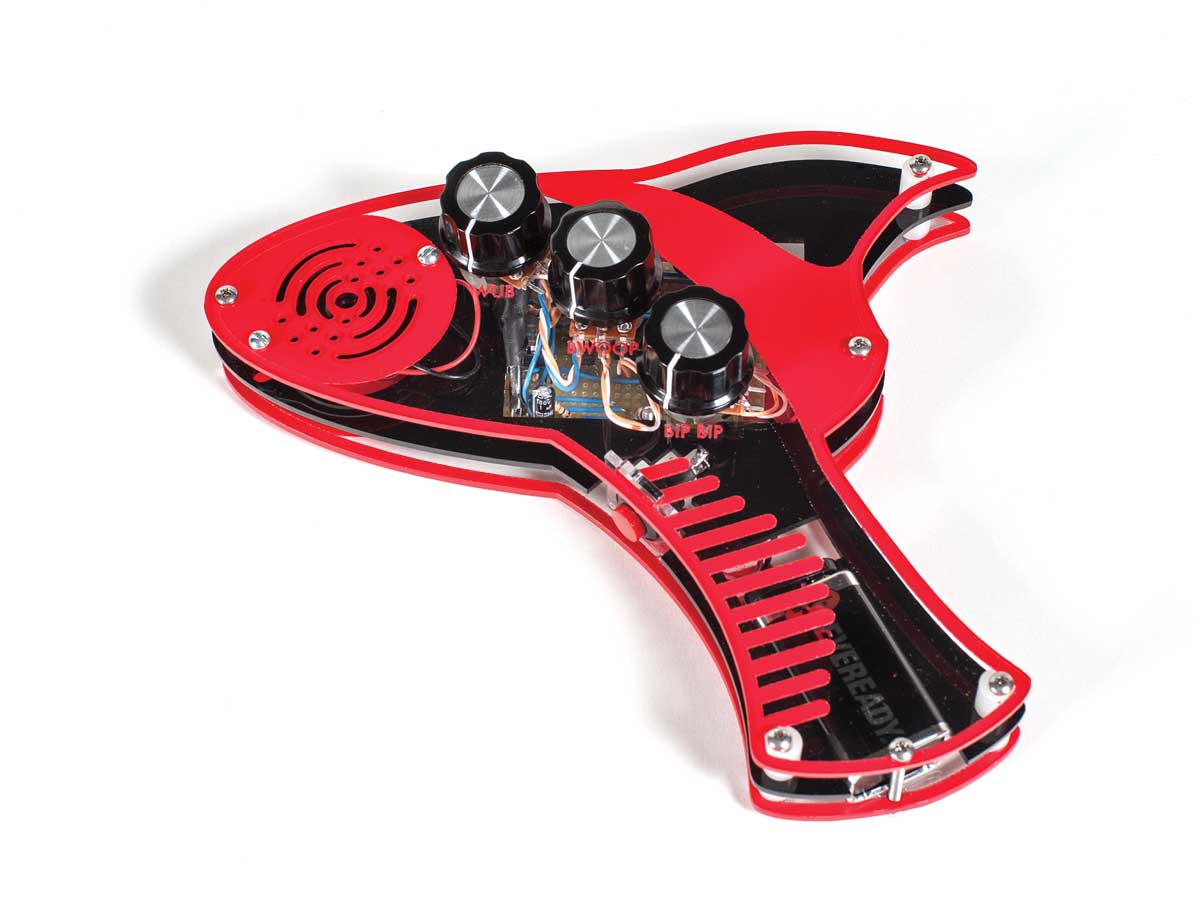The Vector Weapon is a small, lo-fi, electronic noisemaker circuit that makes raygun-style sounds, from classic pew! pew! noises to evolving death-ray-type tones. It uses common parts and tools, is easy to build, and has plenty of modding potential. It has a built-in amp chip and speaker so there’s no need for external amplification.
Here we’ll show you 2 options for building the Vector Weapon from scratch: a basic version that uses PCB-mounted components, and an acrylic-housed raygun version that uses full-size panel-mount potentiometers and switches!
Alternatively, you can buy the kit from Maker Shed and follow the kit build instructions.
How It Works
The Vector Weapon is basically a tiny lo-fi analog synthesizer.
One of the 6 inverters on the 40106 IC, a 1M pot, and a 2.2µf capacitor form a square wave oscillator (Osc 1) that mostly runs slower than the main audio oscillator (Osc 2), and is thus considered a low-frequency oscillator (LFO). This square wave is buffered using 2 more inverters and passed through a capacitor to shape it into a rapidly decaying downward slope. The 100K pot works as a voltage divider that determines how much of this signal is sent to a transistor controlling the LED.
Another 40106 inverter, the light-dependent resistor (LDR), the second 1M pot, and the 47nF capacitor form the main audio oscillator (Osc 2). The LED from Osc 1 is optically coupled to the LDR of Osc 2 so the pitch of Osc 2 rises and falls with the output of Osc 1. The LED also adds a little of its own decay as it won’t go out instantly. The pot connected to Osc 2 sets its lowest frequency, but the LDR is capable of driving it all the way up into the ultrasonic range. The second transistor “listens” to the capacitor charging and discharging and creates a triangle oscillator at the output.
The signal is finally sent through a power amplifier IC (the LM386) to drive an 4Ω speaker.





















